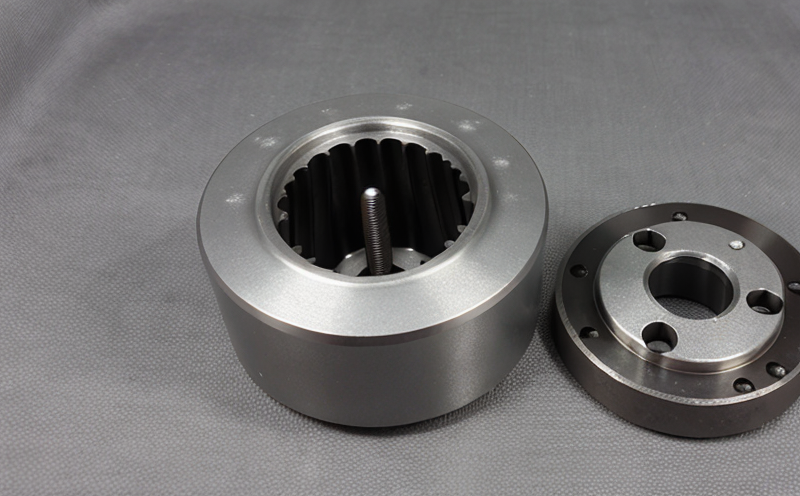ISO/ASTM 52910 Design for Additive Manufacturing Guidelines
The ISO/ASTM 52910 standard provides a framework to design parts that can be manufactured using additive manufacturing (AM) techniques. This guideline ensures that the design of AM components is optimized for manufacturability, quality assurance, and performance. It addresses critical aspects such as geometry, topology, material selection, and process parameters.
The standard emphasizes the importance of understanding the limitations and capabilities of AM technologies to avoid design flaws that could lead to failure in service. By adhering to these guidelines, manufacturers can ensure that parts are designed to meet specific requirements while minimizing production costs and time-to-market.
ISO/ASTM 52910 focuses on three main areas: geometry optimization, process control, and material compatibility. Geometry optimization ensures that the part design is suitable for AM processes by avoiding overhanging features and ensuring good support structures are used during printing. Process control involves selecting appropriate parameters such as layer thickness, scan speed, and cooling rates to achieve desired mechanical properties.
Material compatibility is another crucial aspect addressed in this standard. It ensures that the materials selected for AM processes are compatible with the chosen process and meet the necessary performance criteria. The standard also provides recommendations on post-processing steps like heat treatment or surface finishing to improve part quality further.
In addition, ISO/ASTM 52910 emphasizes the importance of considering end-use requirements when designing parts for AM. This includes factors such as weight reduction, functionality, and aesthetic considerations. By taking these elements into account early in the design process, engineers can create more efficient and effective designs that meet both manufacturing and performance objectives.
One key benefit of following ISO/ASTM 52910 is improved quality control during production. The guidelines provide clear instructions on how to monitor and adjust processes throughout the AM cycle, ensuring consistent part quality across multiple builds. This leads to fewer rejections due to defects or inconsistencies in performance.
Another advantage of this standard is enhanced collaboration between design teams and manufacturing facilities. By providing common language and best practices, ISO/ASTM 52910 facilitates better communication among stakeholders involved in the AM workflow. This promotes a more cohesive approach to product development, ultimately leading to higher-quality outputs.
Compliance with ISO/ASTM 52910 also helps organizations meet regulatory requirements and industry standards. Many sectors require adherence to specific guidelines for safe and reliable products, especially in fields like aerospace and medical devices where precision is paramount. Following these standards can help companies avoid costly recalls or non-compliance penalties.
- Geometry Optimization: Ensuring parts are suitable for AM processes by avoiding overhangs and ensuring proper support structures.
- Process Control: Selecting appropriate parameters such as layer thickness, scan speed, and cooling rates to achieve desired mechanical properties.
- Material Compatibility: Ensuring materials are compatible with the chosen process and meet necessary performance criteria.
Why It Matters
The importance of ISO/ASTM 52910 cannot be overstated, particularly in industries where precision and reliability are critical. By adhering to these guidelines, manufacturers can produce parts that not only meet but exceed expectations for performance and durability.
For quality managers and compliance officers, following this standard ensures their organization meets international standards and regulatory requirements. This is essential for maintaining a competitive edge in global markets where consistent product quality is expected.
R&D engineers benefit from ISO/ASTM 52910 as it provides them with structured approaches to designing parts that are optimized for AM processes. This can lead to innovations in part design and process optimization, resulting in more efficient production methods and cost savings.
Procurement teams also find value in this standard because it helps ensure suppliers meet the necessary quality standards before integrating new materials or processes into their supply chains. This reduces risks associated with introducing untested technologies or components into existing workflows.
Why Choose This Test
The ISO/ASTM 52910 standard is chosen for its comprehensive approach to designing parts suitable for additive manufacturing. It offers a structured methodology that covers all critical aspects of part design, from geometry optimization to process control and material compatibility.
One significant advantage of using this test is the ability to predict potential issues early in the design phase rather than discovering them during production or after deployment. This proactive approach saves time and resources by avoiding costly rework or scrap.
Another benefit is enhanced collaboration between various departments within an organization. By providing a common framework, ISO/ASTM 52910 encourages better communication among design engineers, manufacturing personnel, and quality assurance teams. This collaborative environment fosters innovation and ensures that all voices are heard during the decision-making process.
Furthermore, compliance with this standard enhances an organization's reputation in terms of reliability and consistency. Meeting international standards demonstrates a commitment to excellence and upholds high-quality benchmarks. This can translate into increased customer trust and loyalty, which is crucial for long-term success.
International Acceptance and Recognition
- The ISO/ASTM 52910 standard has been widely adopted by organizations across various industries. Its acceptance in countries like the United States, Europe, and Asia further emphasizes its relevance globally.
- American manufacturers have shown particular interest in this standard due to its alignment with ASTM standards, which are well-established within North American markets.
- European companies value ISO/ASTM 52910 for its rigorous approach to ensuring part quality and manufacturability through AM processes. This aligns closely with European Union directives aimed at promoting sustainable manufacturing practices.
- In Japan, the standard is gaining traction as part of efforts to enhance domestic industries' competitiveness in advanced materials technology. Compliance ensures that Japanese firms can compete effectively on a global scale while adhering to stringent quality control measures.





